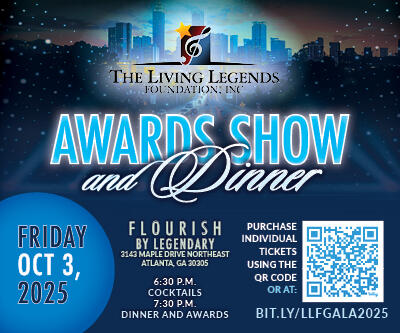Did you know that graffiti and hip-hop have a deep connection dating back to the streets of New York City? This unexpected bond between two artistic forms has shaped cultural expression and left a lasting impact on society. As we delve into the origins, shared elements, and global influence of graffiti and hip-hop, we uncover a fascinating interplay between these art forms that continues to inspire and amaze.
Key Takeaways:
- Graffiti and hip-hop share a historical and cultural connection.
- Graffiti predates hip-hop, but the link between the two was popularized in the 1980s.
- Internal competition and self-glorification are common elements in both graffiti and hip-hop.
- Hip-hop culture has become a global phenomenon, encompassing various artistic elements.
- Many musicians involved in hip-hop are also active participants in the graffiti scene.
The Origins of Graffiti and Hip-Hop
Graffiti and hip-hop both emerged from the same cultural context of the neglected areas of New York City. The graffiti culture began to take shape as early as 1968, but it truly came into prominence in the early 1970s, eventually reaching maturity by 1973.
The link between graffiti and hip-hop was coined by the media in the 1980s to commercialize both cultures. However, graffiti has its own rich history and cultural significance that extends beyond its association with hip-hop. It was nurtured by diverse musical and cultural backgrounds, encompassing a broad range of influences.

The emergence of hip-hop as a cultural phenomenon was influenced by various factors, including press articles, performances, and movies like “Wild Style” and “Beat Street.” These sources helped to popularize the connection between graffiti and hip-hop, perpetuating the idea that they are inseparable components of the New York tradition.
The origins of both graffiti and hip-hop reflect the vibrant creativity and expression that sprang up from the streets of New York City. They provided a voice for marginalized communities and acted as outlets for artistic self-expression. Breakdance and rap music are also integral elements of hip-hop culture, further contributing to its multidimensional appeal.
“Graffiti and hip-hop are intertwined cultural forms rooted in the urban landscape of New York City. Together, they represent a powerful manifestation of artistic expression and a reflection of the communities that birthed them.”
The Shared Elements of Graffiti and Hip-Hop
Both graffiti and hip-hop share important elements that contribute to their cultural significance and artistic expression. These commonalities serve as the foundation for the creative synergy between the two art forms.
One of the shared elements between graffiti and hip-hop is internal competition. This internal competition acts as a symbolic confrontation, sublimating the real violence that may exist in the streets. Graffiti writers and rappers engage in friendly competition, using their artistic skills, athletic feats, and displays of tenacity to outshine their peers. This competitive spirit fuels their drive for constant improvement and pushing the boundaries of their art.
In addition to internal competition, self-glorification is another element that graffiti and hip-hop culture embrace. Both cultures adopt spectacular aliases and assume fantastic identities as a form of self-expression and empowerment. These aliases become a part of their artistic persona, allowing them to transcend their individual selves and embody larger-than-life characters. By adopting these personas, graffiti writers and rappers can confidently express their artistic visions and convey their messages to the world.
Graffiti and hip-hop also intersect in their use of public space for artistic expression. These art forms appropriate public spaces, such as walls and parks, as their canvas, showcasing their creativity to the world. Graffiti writers use spray paint to create intricate and visually stunning murals that transform urban landscapes into vibrant and thought-provoking art galleries. Similarly, rappers utilize the streets as their stage, engaging in freestyle battles and spontaneous performances that captivate audiences with their raw talent and passion.
Competition and self-expression are central to the essence of both graffiti and hip-hop. These shared elements form the foundation of their creative endeavors and contribute to the continuous evolution of these art forms. Whether it’s through the mastery of artistic skills, the adoption of larger-than-life personas, or the transformation of public spaces, graffiti and hip-hop thrive on the creative synergy between competition, self-glorification, and artistic expression.
Internal Competition: A Symbolic Confrontation
The internal competition within graffiti and hip-hop serves as a symbolic confrontation, providing an outlet for artistic competition rather than resorting to real-life violence. Through their artistic skills, athletes’ feats, and unwavering determination, graffiti writers and rappers establish a competitive environment that pu<a href="1s them to excel. This internal rivalry not only drives individual growth but also elevates the art forms as a whole.
The Global Impact of Hip-Hop Culture
Hip-hop culture has transcended geographical boundaries and has evolved into a global phenomenon. Its influence is felt in various artistic realms, including music, dance, graffiti, poetry, theater, and literature. Through these diverse avenues, hip-hop culture has become a unifying force, connecting people from different backgrounds and regions.
At the heart of hip-hop music are the DJs, who skillfully handle beats and create unique musical experiences for audiences worldwide. The rhythmic and melodic elements of hip-hop have captured the attention of listeners, leading to its widespread popularity.
MCs, or rappers, play a vital role in hip-hop culture by using spoken-word poetry to convey powerful messages and tell stories that resonate with individuals across cultural boundaries. Their lyrics and flow highlight social and personal issues, providing a voice for the marginalized and inspiring others to speak up.
Breaking, a dynamic dance form within hip-hop, showcases super-quick footwork, body twists, and acrobatic moves. It is an integral part of hip-hop culture, captivating audiences with its high-energy performances and expressive movements.
Graffiti, with its highly stylized lettering and illustrations, is another crucial aspect of hip-hop culture. Graffiti artists use public spaces as canvases to express their creativity, often incorporating hip-hop themes and symbols. Their vibrant and thought-provoking artworks add color and life to urban landscapes.
Theater and literature have also embraced hip-hop culture, incorporating its elements and themes to create powerful narratives. Plays, musicals, and novels influenced by hip-hop provide a platform for creative expression and comment on various societal issues.
The global impact of hip-hop culture goes beyond artistic mediums. It has transformed into a way of life, reflecting and challenging societal norms. From fashion trends to language and attitudes, hip-hop has had a profound influence on popular culture, positioning itself at the forefront of social change.
The Artifacts Within Hip-Hop: Musicians as Graffiti Artists
It is fascinating to discover that many musicians involved in hip-hop culture are also passionate about graffiti. Artists like Fat Joe, Goldie, DJ Kay Slay, Promoe, Kamikaze CPV, DJ Pone, Lil Supa, Grems, 3D from Massive Attack, and DJ Adam X are all actively engaged in the graffiti scene. Some of them are members of legendary graffiti crews like TATS and TFP, while others have their own crew affiliations. These artists demonstrate the interconnectedness and creative synergy between graffiti and hip-hop, showcasing their talents in both disciplines.
Conclusion
The connection between graffiti and hip-hop culture is profound and historically significant. While graffiti predates hip-hop, the link between these two art forms emerged in the 1980s, shaped by the media and popularized through movies and performances. Graffiti and hip-hop share common elements of internal competition and sel
f-glorification, serving as powerful expressions of artistic skill and individuality.
The global impact of hip-hop culture has transformed it into a way of life, encompassing various artistic elements such as music, dance, poetry, theater, and literature. Hip-hop has transcended geographical boundaries, connecting people from different cultures through its universal language. It has become a cultural force that reflects and comments on various aspects of society, <a href="1dding light on important issues and inspiring change.
Within the hip-hop community, many musicians actively participate in the graffiti scene, demonstrating the artistic synergy and deep connection between these two art forms. Artists like Fat Joe, Goldie, DJ Kay Slay, Promoe, Kamikaze CPV, DJ Pone, Lil Supa, Grems, 3D from Massive Attack, and DJ Adam X showcase their talents in both graffiti and hip-hop, revealing the interplay between these forms of expression.
The cultural connection between graffiti and hip-hop continues to shape and inspire contemporary artistic expression. As graffiti artists and hip-hop musicians collaborate and push boundaries, they create a rich tapestry of creativity and innovation. The fusion of graffiti and hip-hop culture creates a dynamic platform for individuals to express their thoughts, emotions, and identities, leaving an indelible mark on the cultural landscape.
FAQ
Q: What is the connection between graffiti and hip-hop?
A: Graffiti and hip-hop have a deep connection that originated in the streets of New York City. While graffiti culture emerged in the late 1960s, it started to be associated with hip-hop in the 1980s. This link was mainly created by the media and popularized through movies like “Wild Style” and “Beat Street.”
Q: How do graffiti and hip-hop relate to each other historically?
A: Graffiti predates hip-hop and has its own history and cultural significance. The connection between graffiti and hip-hop has persistently existed, shaping the perception of graffiti in the mainstream as a part of hip-hop culture.
Q: What elements do graffiti and hip-hop share?
A: Both graffiti and hip-hop share important elements such as internal competition and self-glorification. Graffiti writers and rappers compete through their artistic skills and display tenacity. They also adopt spectacular aliases and assume fantastic identities. Both cultures appropriate public space for artistic expression and showcase their creativity in the streets and parks.
Q: What is the global impact of hip-hop culture?
A: Hip-hop culture has transcended geographical boundaries and has become a global phenomenon. It encompasses various artistic elements such as music, dance, graffiti, poetry, theater, and literature. Hip-hop culture reflects and comments on various aspects of society, providing a platform for creative expression.
Q: Are there musicians involved in hip-hop who are also passionate about graffiti?
A: Yes, many musicians involved in hip-hop culture are also passionate about graffiti. Artists like Fat Joe, Goldie, DJ Kay Slay, Promoe, Kamikaze CPV, DJ Pone, Lil Supa, Grems, 3D from Massive Attack, and DJ Adam X are all actively engaged in the graffiti scene. They demonstrate the interconnectedness and creative synergy between graffiti and hip-hop, showcasing their talents in both disciplines.
Q: What is the significance of the connection between graffiti and hip-hop culture?
A: The connection between graffiti and hip-hop culture is profound and historically significant. While graffiti predates hip-hop, the link between these two art forms emerged in the 1980s, shaped by the media and popularized through movies and performances. The connection between graffiti and hip-hop reflects a cultural synergy that continues to shape and inspire contemporary artistic expression.
Source Links
- https://urbanario.es/en/articulo/what-does-graffiti-have-to-do-with-hip-hop/
- https://www.kennedy-center.org/education/resources-for-educators/classroom-resources/media-and-interactives/media/hip-hop/hip-hop-a-culture-of-vision-and-voice/
- https://www.mtn-world.com/en/blog/2021/07/28/10-famous-musicians-who-are-graffiti-writers/


